(You can see pictures of all of the dishes listed in this Best Dishes of 2016 flickr set).
 |
| vitello tonnato - Andrew Zimmern at Vagabond Cobaya / SOBEWFF dinner |
Most folks probably know Zimmern from his James Beard Award winning Travel Channel program, Bizarre Foods. What they may not know is that the guy can also flat out cook. In addition to a silky vichyssoise with a citrus-cured oyster that was served as guests gathered around the Vagabond's poolside bar, he also was responsible for my favorite course of the evening: a riff on an Italian classic, vitello tonnato, done here with thin slices of veal tongue, a tangy anchovy-laden dressing, citrus segments, chile oil spiked fried capers and slivered olives for some punch, and crispy chickpea crackers for scooping.
Whenever we do a Cobaya dinner on our own, people generally know they're going to be in for something a bit different and adventurous. But seats at the SoBeWFF dinner get filled by all sorts of folks, including many who may not quite know what they're in for. So one of the highlights of the evening for me was Zimmern making sure to wait until everyone was about four bites into the dish before giving its description, and letting everyone know that he'd used veal tongue. I'd guess that about a quarter of the diners' jaws dropped. It makes me even more grateful for the support and open-mindedness of the group who come out to our regular dinners.
One of the really great things about this event was to see the teamwork of the chefs and their crews in the kitchen. As Carlo Mirarchi and his pastry chef Sam Short started to plate their dessert, everyone else jumped onto the line to help. The end result was outstanding: a nutty, burnt lemon cake, surrounded by a couple globes of coconut "fluff," with puddles of fragrant meyer lemon curd, a sort of celery jam, and sweet poppy seeds. Too often, these savory-leaning desserts feel contrived; but here, everything improbably made perfect sense together.
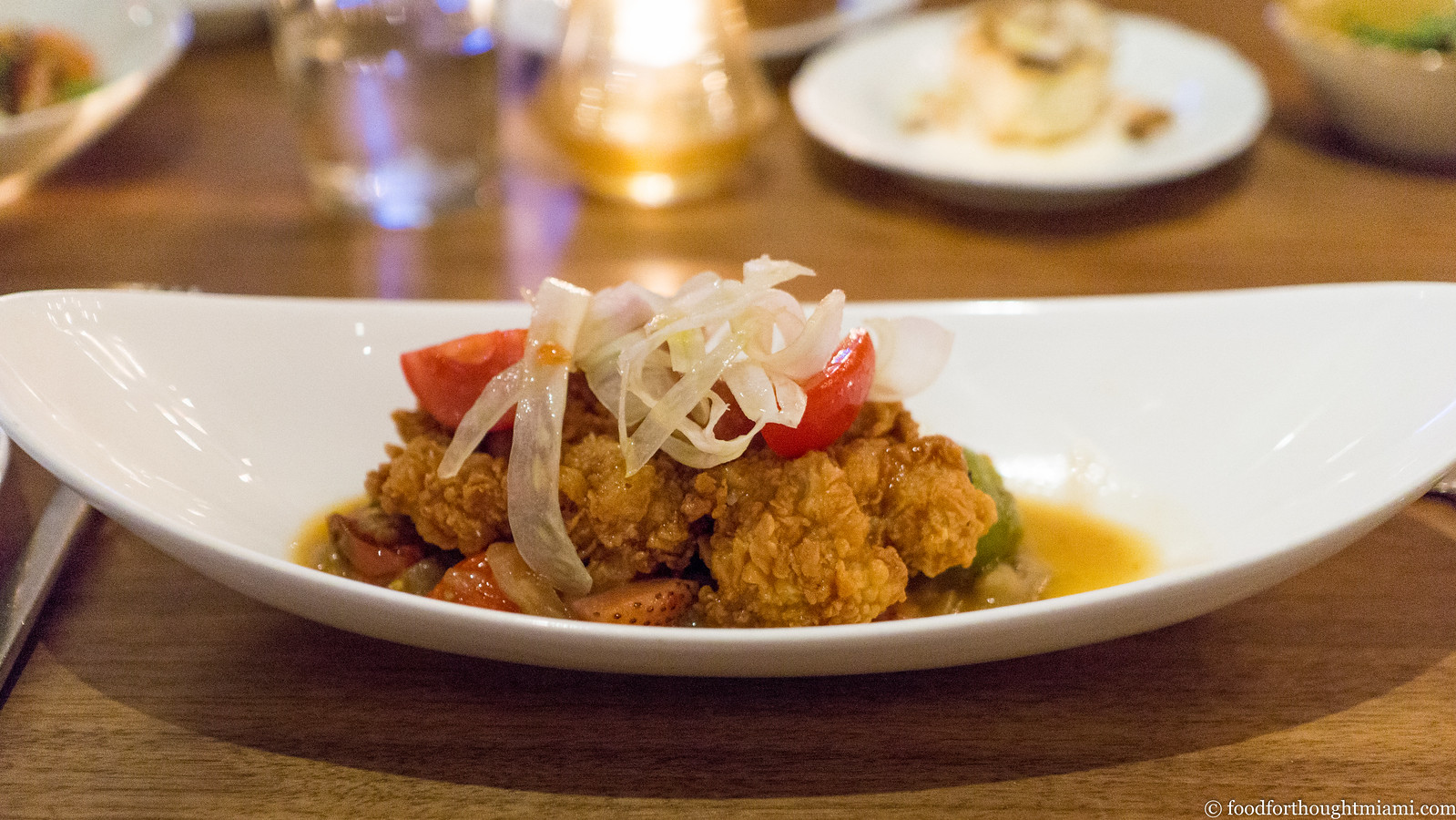 |
| sweetbread, tomato, fennel, pickled strawberry - Cena by Michy |
The decor and menu have changed at Cena by Michy (f/k/a Michy's), but at least one thing remains the same: if there is a sweetbread dish on the menu at a Michelle Bernstein restaurant, it will be outstanding. Case in point: this sweetbread milanese, like a cloud encased in a crispy shell. It's served with a tangy sort of stew of cherry tomatoes and fennel ribbons, with a wonderful little surprise: pickled strawberries, which provide little jolts of refreshing, sweet-tart contrast.
 |
| clams and rice - Bazi |
This is the kind of thing a chef does because they really want to, and maybe because they're a little crazy. Let's not dwell too long on how much this truly resembles a traditional Japanese kaiseki dinner (short answer: not too much). Instead, let's talk about the best thing I ate there: the clams and rice dish Pirolo served as one of the courses.
In this one dish, Pirolo ties together his Italian background and his Japanese ambitions. Diced razor clams are combined with chewy but tender viaolone nano rice, all served in the clam's shell. The rice is prepared in classic "all'onda" fashion, and bound with the clams by an uni vinaigrette which further highlights the flavors of the sea. A shower of fresh lemon balm adds a bright, herbaceous, citrusy note. It's a beautiful dish.
 |
| valley between Andes | avocado, tree tomato, kiwicha - Alter / Central dinner |
"Valley Between Andes" – I later figured out that Martinez's menu at Central features dishes inspired by the products of different elevations of the Peruvian topography. This one included avocado, tree tomato (a/k/a tamarillo), and kiwicha (amaranth seeds). The avocado was so creamy and rich that it almost ate like tender braised beef, napped with a tangy sauce and speckled with the nutty, quinoa-like kiwicha, with shards of translucent, herb-dotted crackers for some textural contrast.
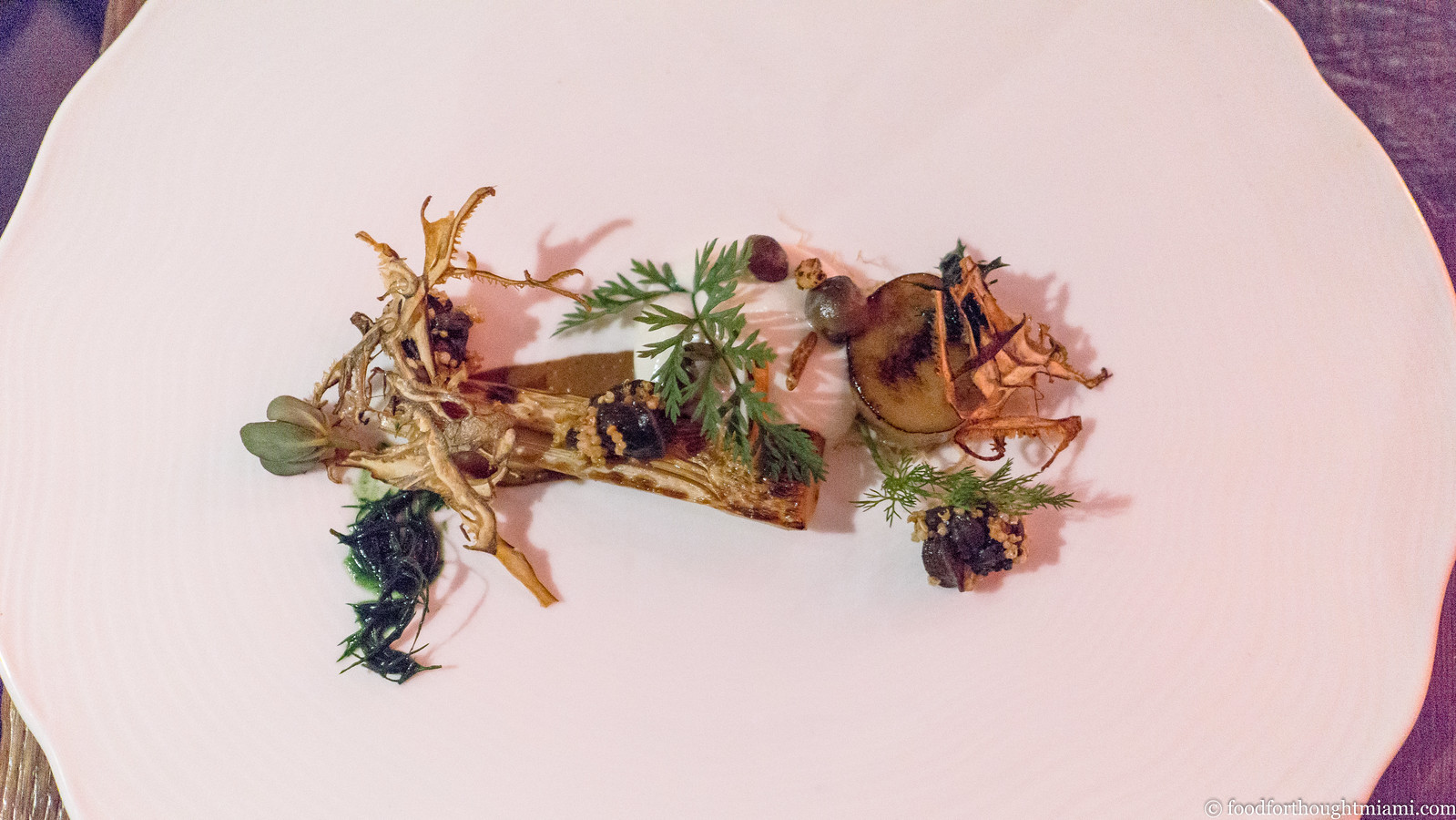 |
| fallen tree | heart of palm, snails, fungi, moss, spores - Alter / Central dinner |
"Fallen Tree" – Brad started with a caramelized tranche of heart of palm as the base of the dish, with the other components evoking a tropical forest floor: snails, dehydrated mushrooms, a tangle of green (seaweed?) moss, a pouffe of spring garlic mousse with pickled honshimeji mushroom "spores" poking up out of it.
(continued ...)
 |
| carrot risotto, orange, coriander, feta - Little Park |
I was particularly smitten with the carrot risotto, whose bright orange hues were matched by the brightness of its flavors: wisps of raw carrot contrasting against those cooked into the risotto, the zip of fresh citrus, a scatter of tangy feta cheese, a mysterious whiff of coriander.
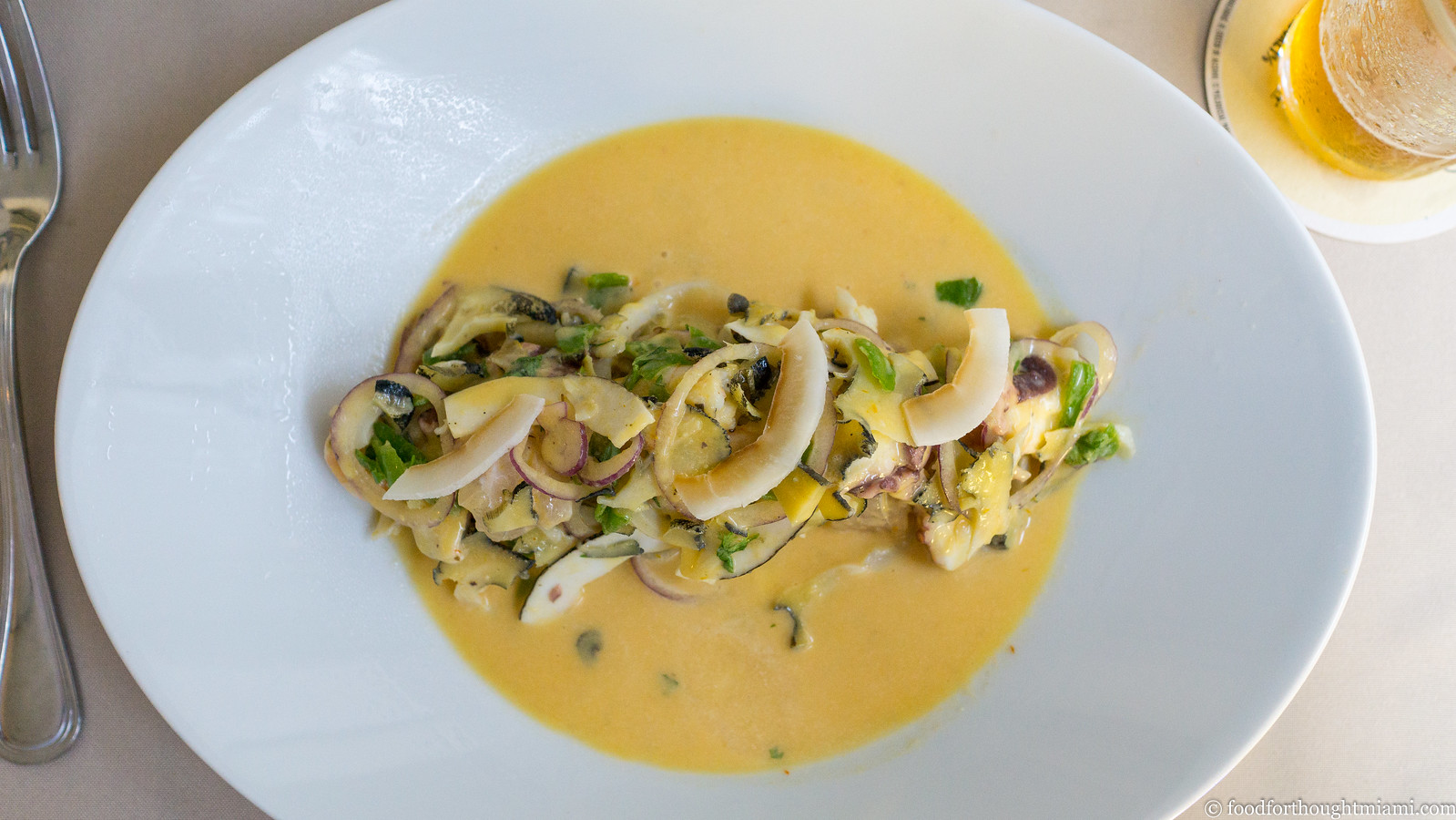 |
| cebiche coco - El Boliche Cebicheria |
The ceviche de coco was possibly the best I had the whole trip: a mix of seafood including whitefish, shrimp, squid, conch and octopus, swimming in a marinade of coconut milk and aji amarillo, all laced with ribbons of fresh and dehydrated coconut. It's hard to imagine anything could taste more like the Caribbean coast.
 |
| kohlrabi marinated with cherry leaves and lemon balm - Birch |
I keep lists of restaurants for dozens of cities I've never visited, as if I might get airlifted one day without warning and need to find a good meal. I didn't have a long list for Providence, but I did have at least this one name. So when I had reason to visit Providence in June, I didn't look that hard for a same-day return flight, and instead lingered for dinner. It was time well spent.
I lost count at fifty. So let's just say there are at least fifty sheets of kohlrabi, layered in soft, translucent ribbons, that made up this dish. They're marinated with cherry leaves, interspersed here and there with apple, Vietnamese coriander and lemon balm. The whole fragile assemblage is laid atop a base of tangy creme fraiche. It's beautiful, delicate, brightly flavored, unexpected – and also the best kohlrabi dish I've ever tasted.
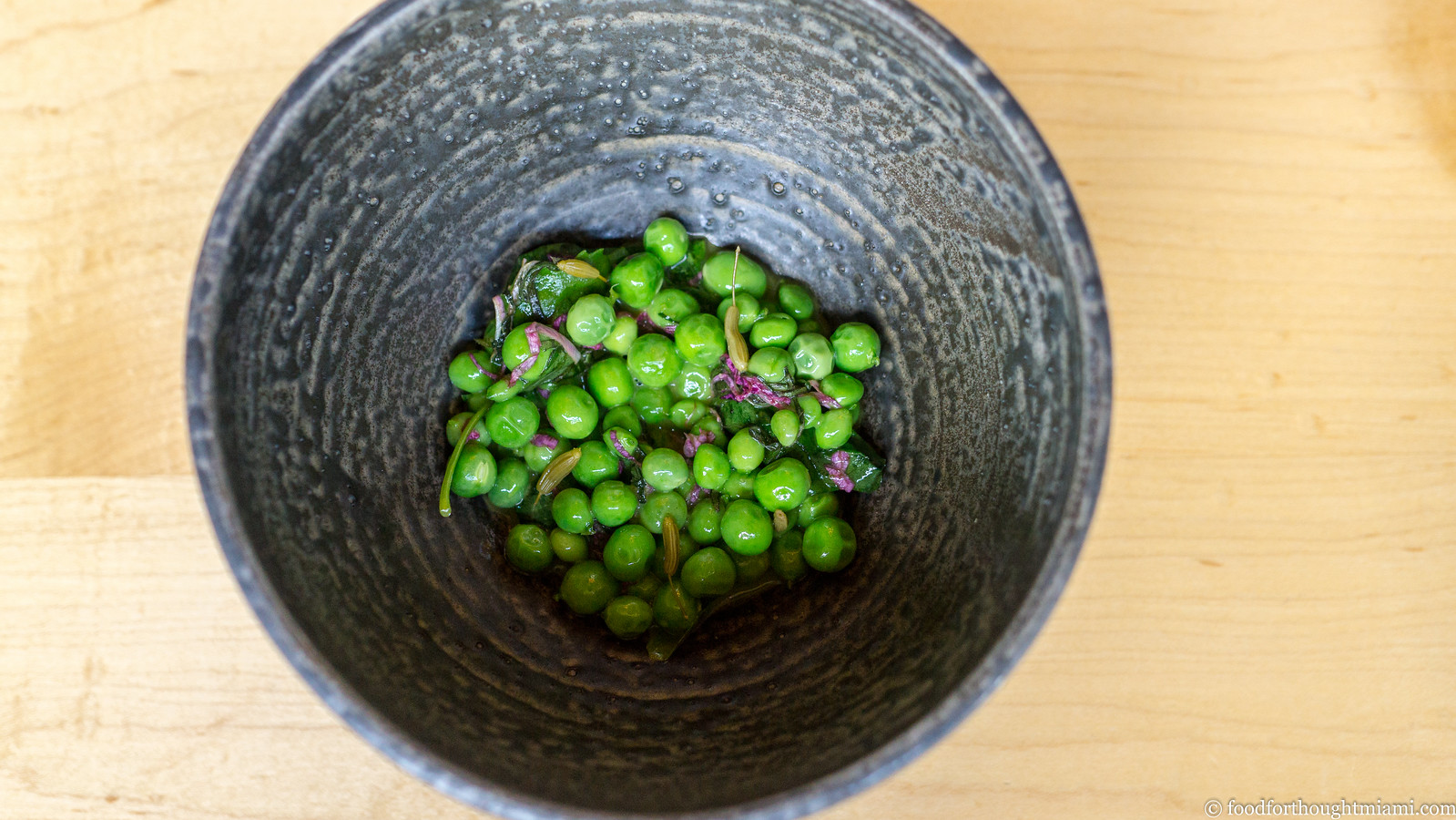 |
| sweet peas, beach rose, basil, fennel seed and lamb's quarters - Birch |
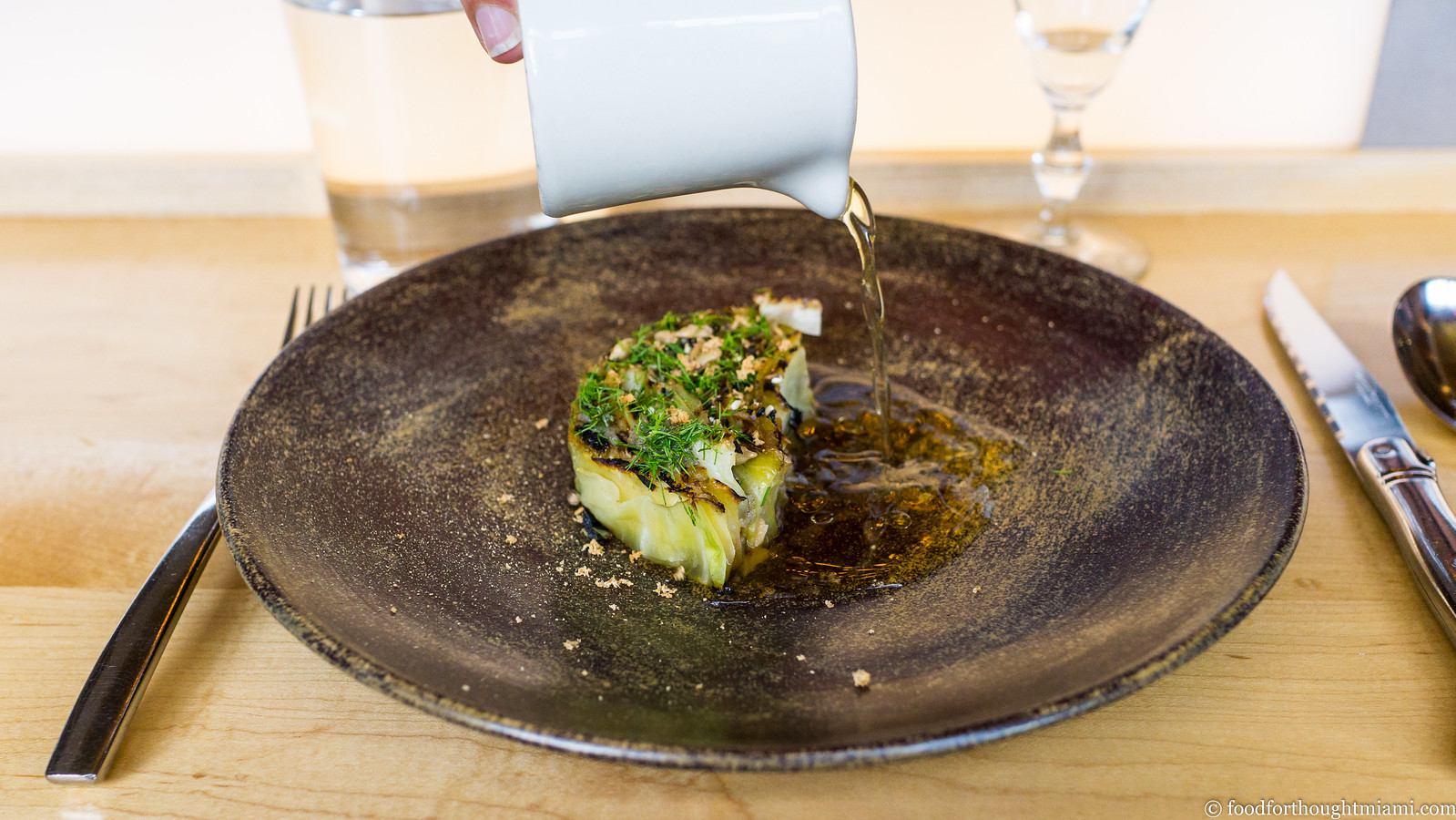 |
| lightly grilled cabbage - Birch |
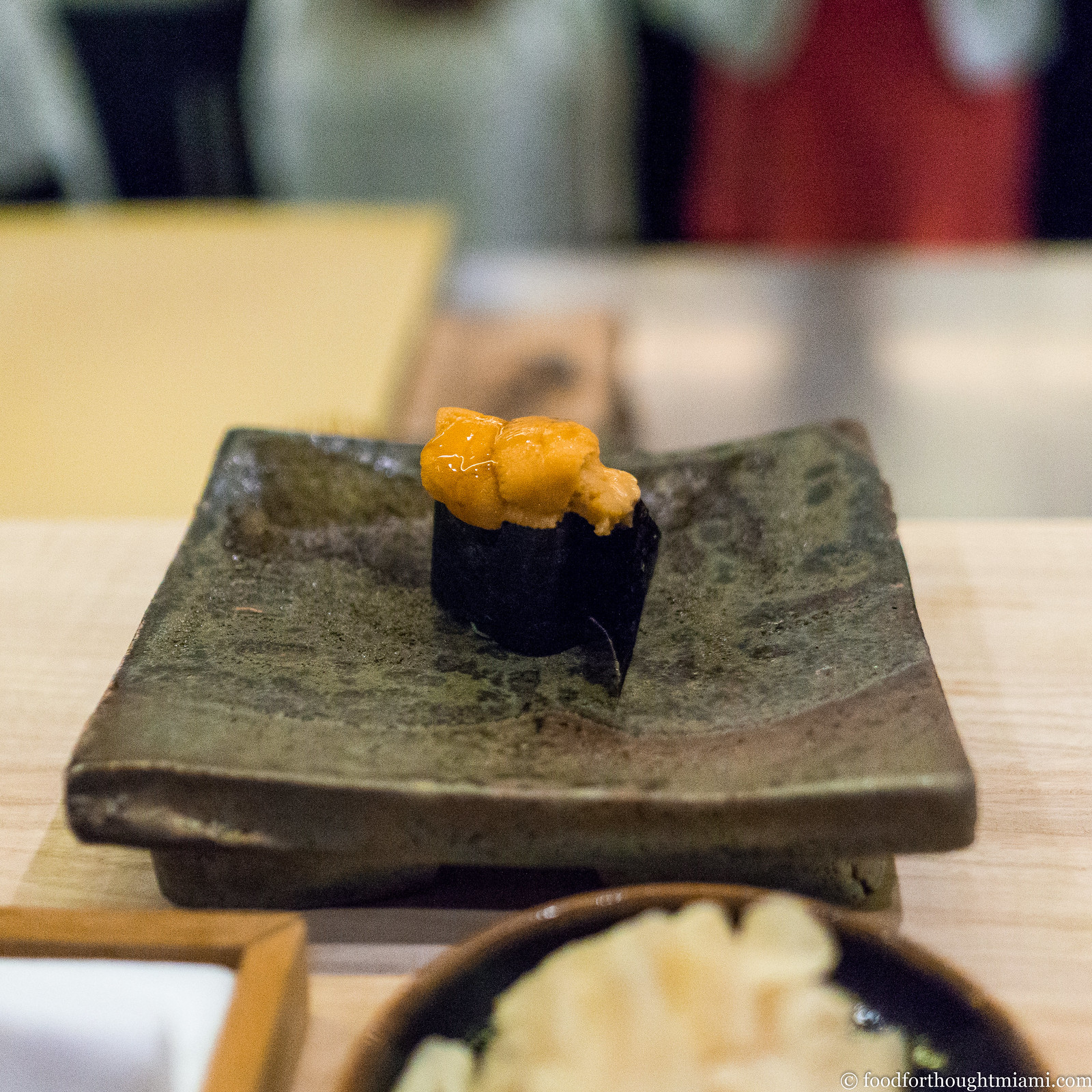 |
| Hokkaido uni sushi - Shuko |
Some sort of sound had involuntarily come out of my mouth. I'm not sure exactly what it was; it may have been a moan. It may have been a giddy chuckle. But when I came back to my senses, I saw that everyone on the other side of the counter was looking at me with an expression somewhere between bemusement and shock.
Shuko is not a stereotypically austere, somber sushi bar: the soundtrack is dominated by old-school hip-hop, and the chefs fist-bump regulars across the bar. But still, whatever I'd done had caught everyone's attention.
It was triggered by this bite of Hokkaido uni: the lobes of sea urchin cold and creamy, with a flavor both briny and fruity, like an oceanic peach, tucked over a pillow of rice into a gunkan maki of crisp nori. Beautiful stuff, worth embarrassing yourself a little bit.
 |
| caviar Benedict with corn and ham - Eleven Madison Park |
Still and yet, it was a really, really nice few hours we spent in that gorgeous dining room, a beautifully paced and presented lunch with several highlights, including this reconstructed eggs Benedict with a ring of soft custard, good ham, fresh sweet summer corn, and a generous dollop of caviar in the middle, topped finally with a frothy hollandaise sauce, with some miniature English muffins riding sidecar.
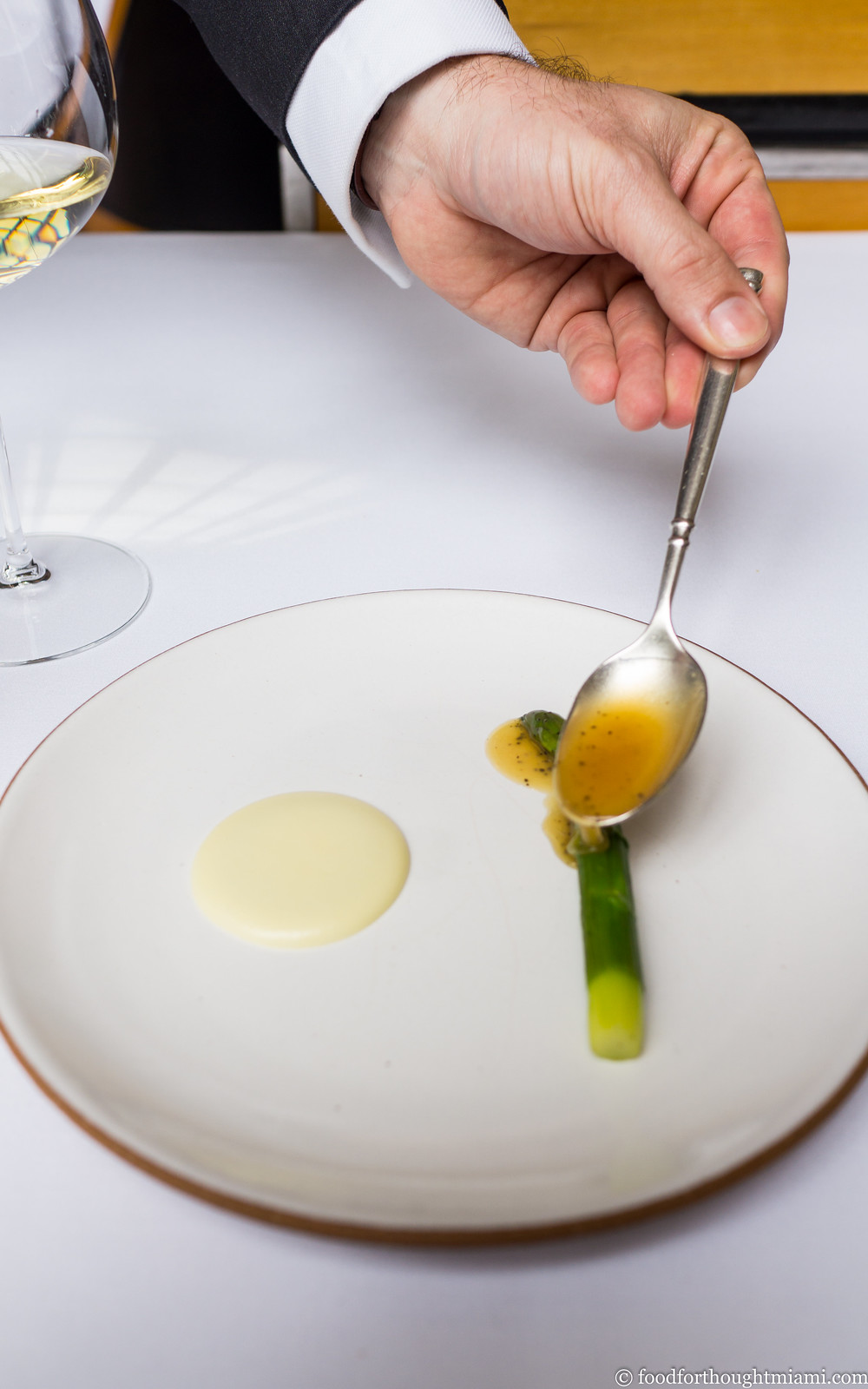 |
| asparagus en vessie with potato and black truffle - Eleven Madison Park |
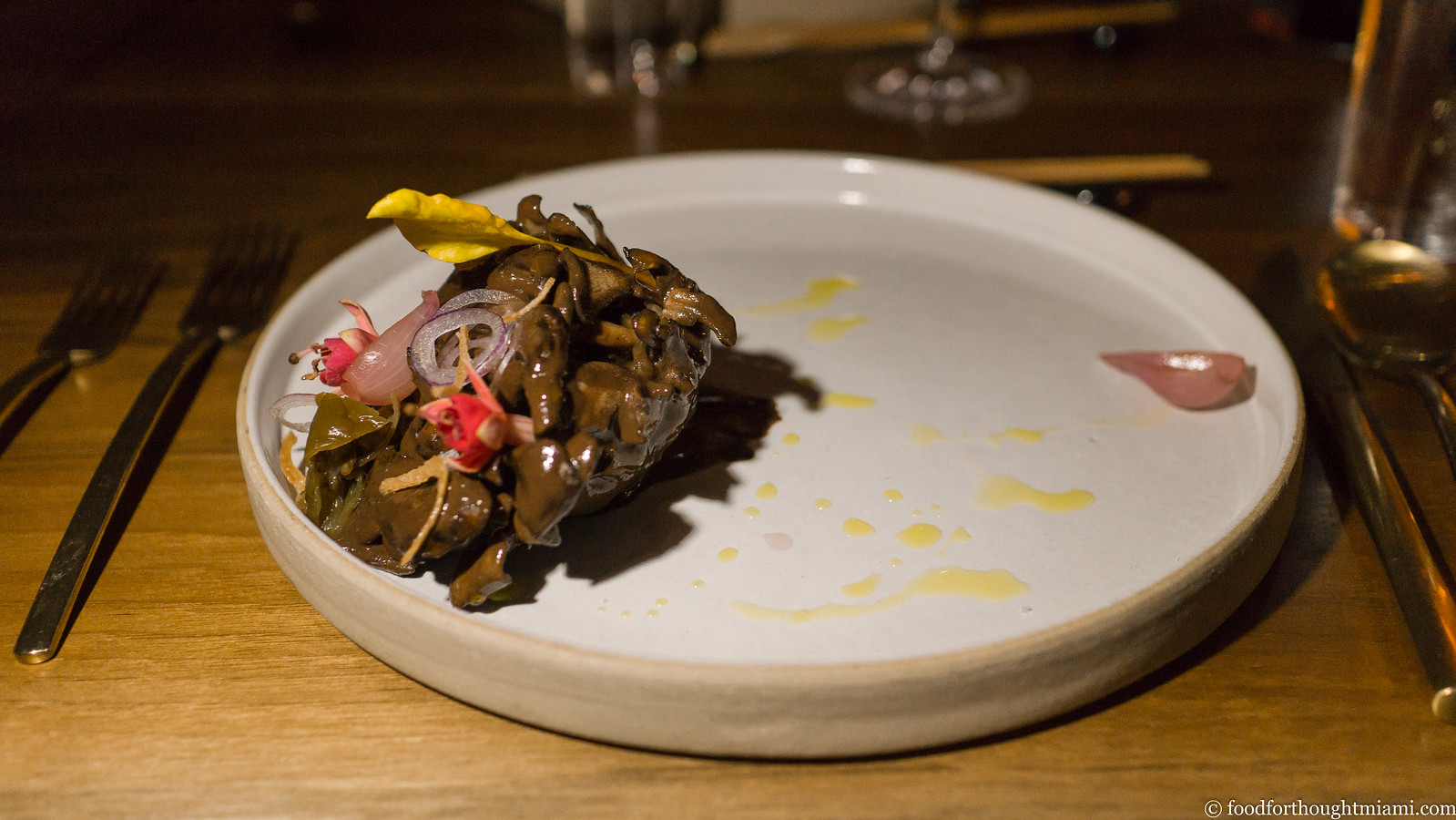 |
| maitake mushroom dinuguan - Pao by Paul Qui Cobaya dinner |
I'd been to Paul Qui's restaurant Pao in the Faena Miami Beach once before, very shortly after it opened. I had a good meal – some dishes were great – but it felt restrained, like there was a lot more reverberating under the surface. It almost seemed as if he was cooking for this room, trying to match the polish of the gilded (literally!) ceiling and multi-million dollar Damien Hirst sculpture that is its centerpiece. I wanted to see what he could do if unburdened by those expectations, and just allowed to cook.
This may have been one of the best dishes I've had all year. It starts with fat cluster of maitake mushrooms (a/k/a hen of the woods). The whole thing is glazed with a dense, thick dinuguan sauce, typically a Filipino offal stew enriched with pork blood. Some pink pickled onions provide some tart contrast. Both the glossy brown appearance and the velvety texture here would explain why dinuguan is sometimes called "chocolate meat." Bathed in that intense, rich sauce, this mushroom may have tasted meatier than any steak I've eaten this year. It was a stunning dish.
 |
| orange chocolate souffle, creme anglaise - Pinch Kitchen |
I'm not much of a dessert person, but there are certain things that hit certain spots for me. The combination of orange and chocolate is one of them, going back to a childhood fondness for the mandarin chocolate sherbet at Baskin Robbins (the flavor was discontinued many years ago, but memories persist). So when I see a dessert with orange and chocolate, I have trouble not ordering it.
Somehow I missed it on my first visit to Pinch Kitchen, a new-ish restaurant opened up on the northern periphery of the "MiMo District" along Biscayne Boulevard by a couple Pubbelly alumni, John Gallo and Rene Reyes. But their short list of desserts includes an orange and chocolate soufflé, baked right inside hollowed out oranges, and served with a classic creme anglaise. I went back for brunch this weekend to try it (and a couple other things).
The soufflé is airy and light but intense with chocolate flavor, drawing some extra citrus perfume as you scrape your spoon across the inside of the orange skin. I don't know if Baskin Robbins is ever bringing back mandarin chocolate sherbet, but this is a good substitute.
 |
| chupe de hongos de Quintay - Boragó |
Boragó operates as a crash course in the cuisine and culture of Chile. One of the challenges of that approach is that if you don't know much going in, it's like showing up for class without having read the materials first: a lot of it may go over your head. I cannot recall the last time I tasted, in one meal, so many things that were unfamiliar and new – used not just for novelty, but because they have a story to tell. The more I understood of the reference points this meal invoked, the more I appreciated it.
This course was served in a wide ceramic bowl, which was brought to the table wrapped in cloth. Inside the bowl was a "chupe" – a stew – of wild mushrooms from Quintay, a town on the Pacific coast due west from Santiago. At the base of the bowl was a thick purée of the richly flavored mushrooms, which had been hung over embers for five hours. Arranged above the purée were several pickled and dehydrated leaves. The server finished the dish by pouring into the bowl whey from pajarito (kefir?) yogurt which had been infused with eucalyptus. This was like the flavors of a forest, concentrated in one bowl: the earthy, meaty mushrooms, their flavors deepened over the smoke; the pickled leaves; the woodsy scent of eucalyptus, all of it pulled together in the lactic tang of the whey. It was a unique and memorable dish.
 |
| cuchufli de rosa del año - Boragó |
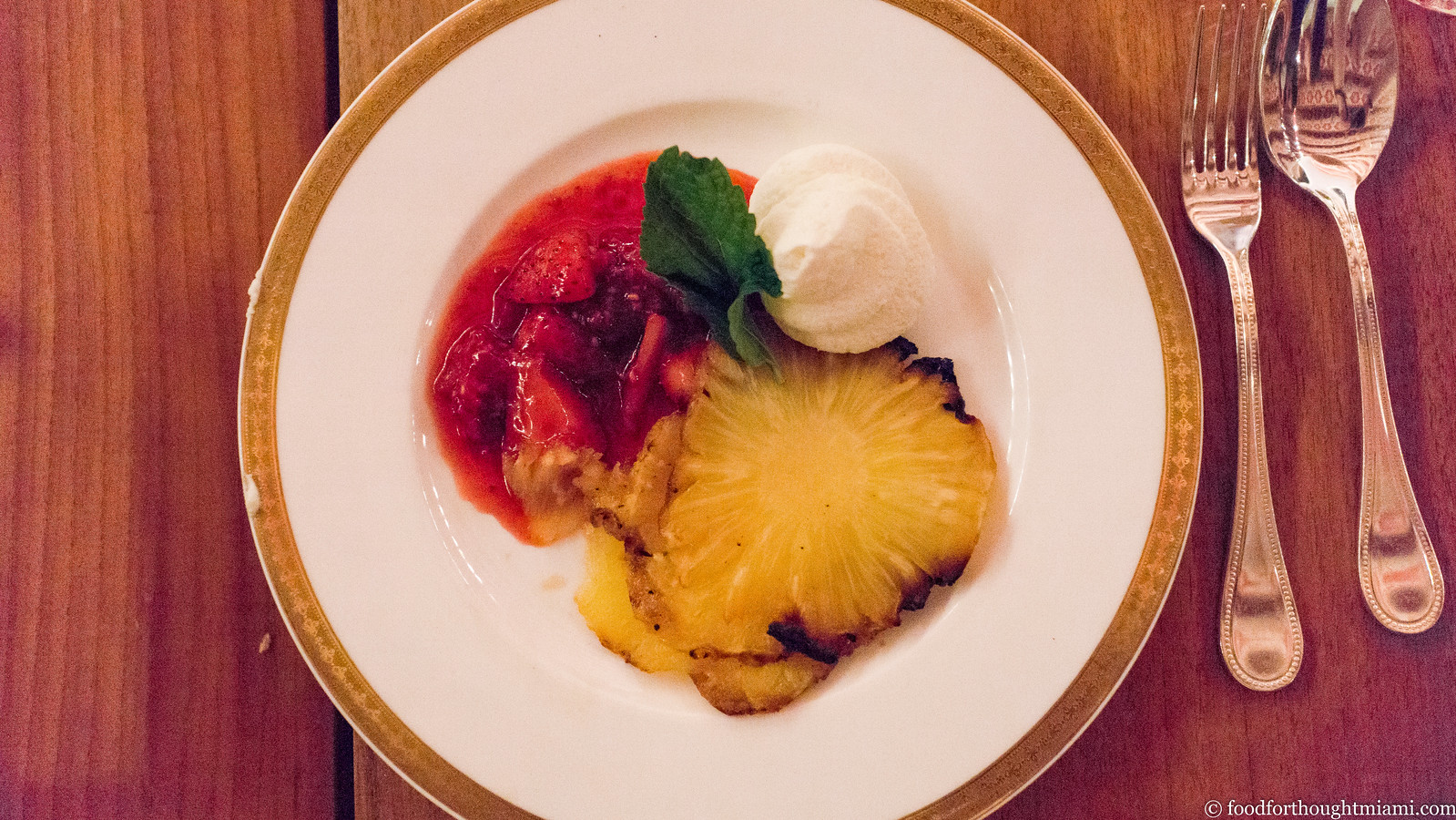 |
| grilled pineapple, macerated strawberries, mascarpone cream - Los Fuegos Cobaya dinner |
Then Los Fuegos' chef Vitor Perim set about slicing the whole pineapples which had also been cooking over the fire as we arrived. In fact, they'd been cooking for the past seven hours. Still juicy and sweet, and silky soft (the core was as tender as the flesh), the pineapple was also entirely suffused with the smoky perfume of the fire. It was a pretty magical combination. The rounds of pineapple were served simply with macerated strawberries and a mascarpone cream; the fewer distractions, the better.
And that, my friends, wraps up Part 2 of my best dishes of 2016. Read Part 1 here, and Part 3 here.

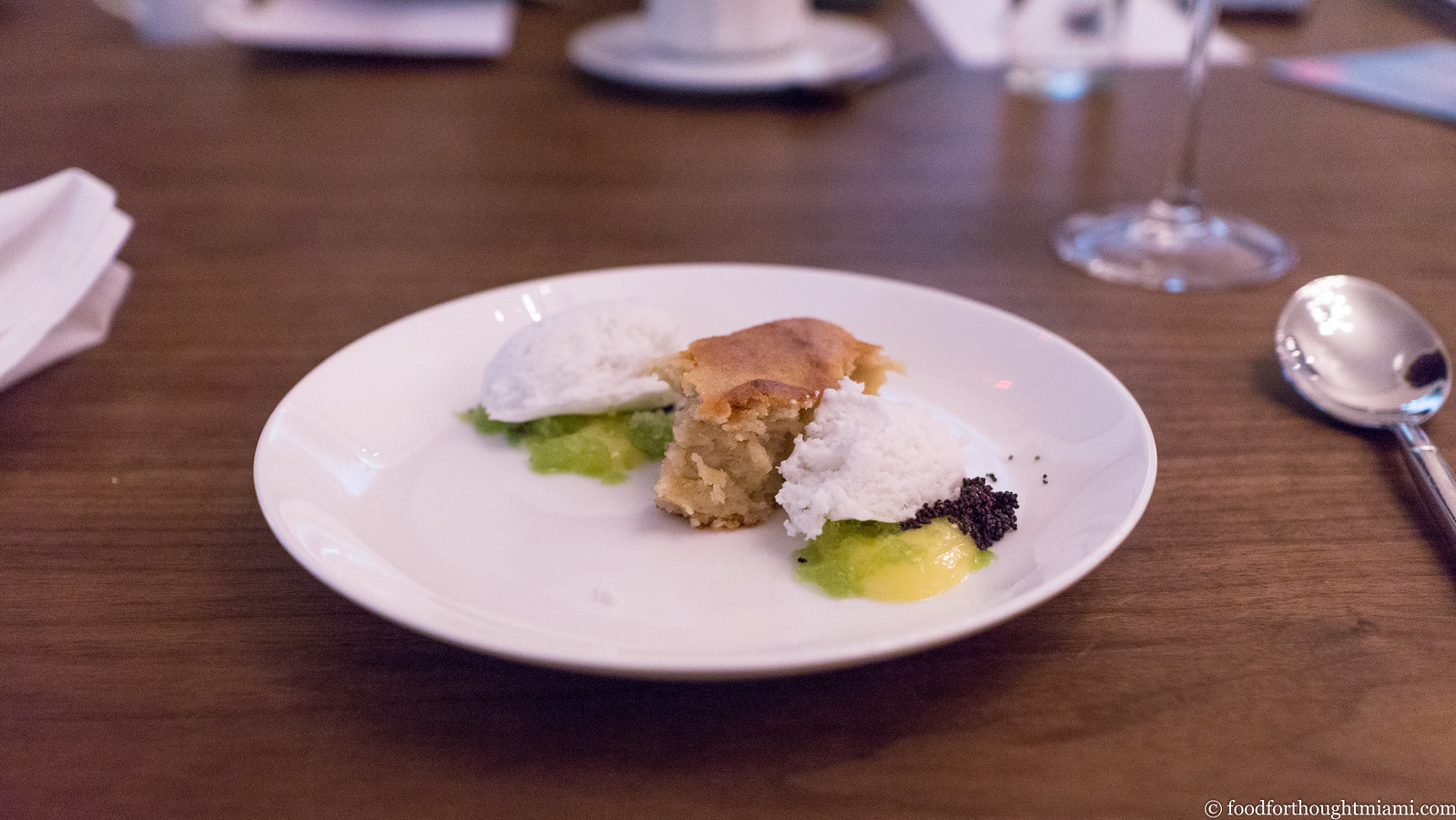
No comments:
Post a Comment